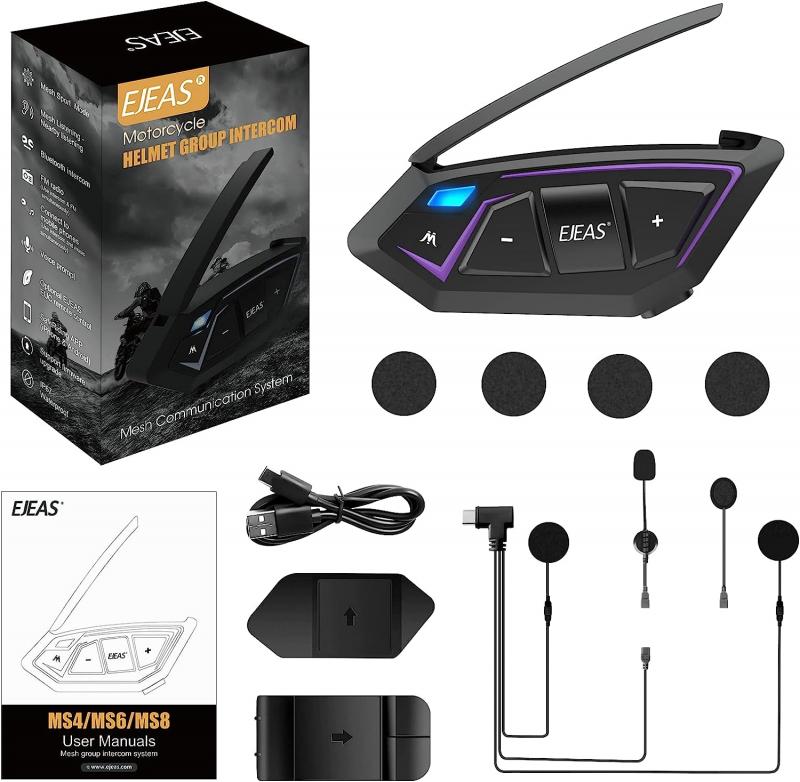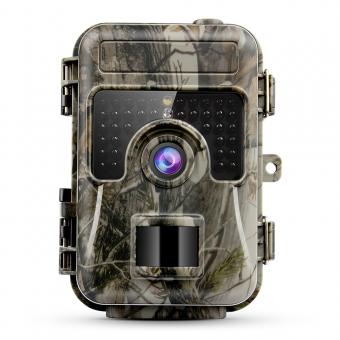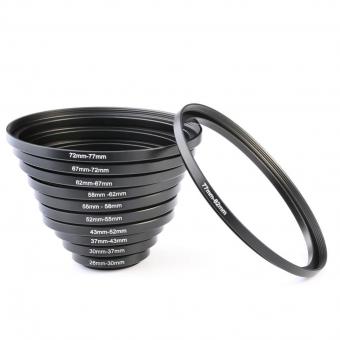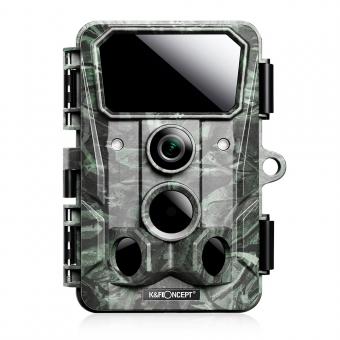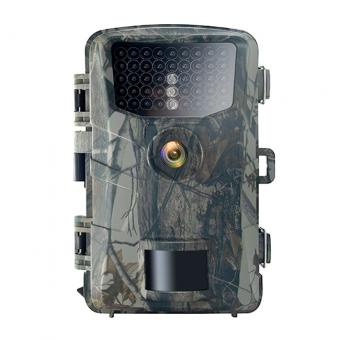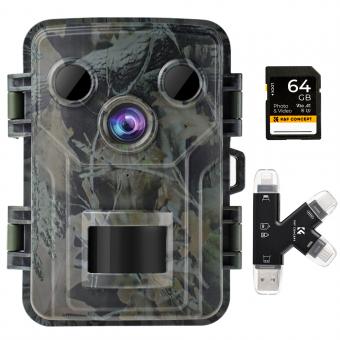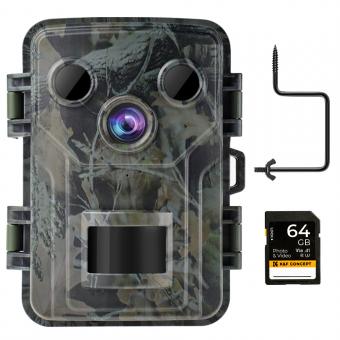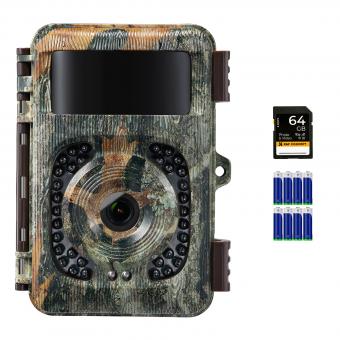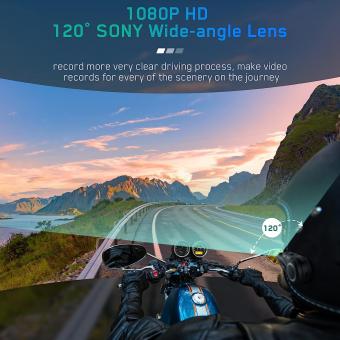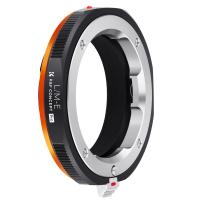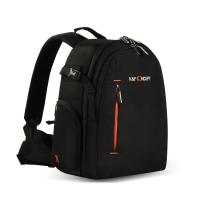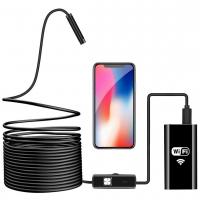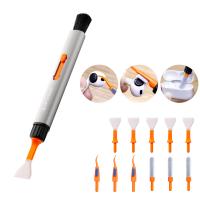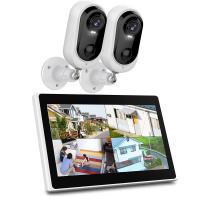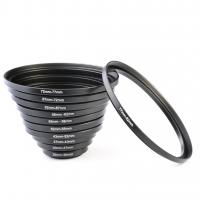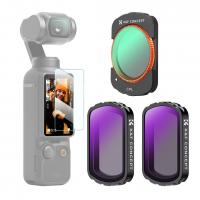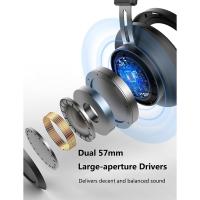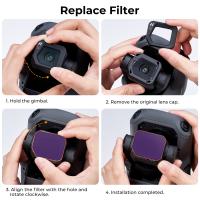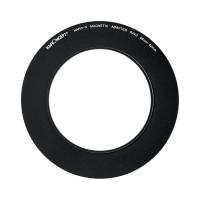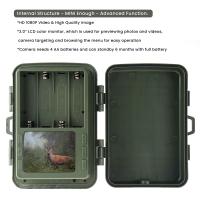How To Set Up Towgaurd Wildlife Camera ?
To set up a Toguard wildlife camera, first, choose a suitable location for the camera that offers a good view of the wildlife you want to capture. Ensure that the camera is placed securely and protected from harsh weather conditions. Next, insert batteries or connect the camera to a power source if it has that option. Adjust the camera settings according to your preferences, such as resolution, photo or video mode, and motion detection sensitivity. Mount the camera securely using straps or a tripod. Finally, test the camera by triggering the motion sensor or manually taking a photo or video to ensure it is functioning properly.
1、 Camera Placement: Choosing the optimal location for wildlife observation.
Camera Placement: Choosing the optimal location for wildlife observation.
Setting up a towguard wildlife camera requires careful consideration of camera placement to ensure optimal wildlife observation. Here are some steps to guide you in setting up your camera:
1. Research and scout the area: Before setting up your towguard wildlife camera, it is essential to research the target wildlife species and their habits. Understanding their behavior, feeding patterns, and preferred habitats will help you choose the best location for your camera.
2. Choose a strategic location: Look for areas with high wildlife activity, such as watering holes, game trails, or feeding areas. These locations increase the chances of capturing wildlife on camera. Additionally, consider placing the camera near natural features like trees or rocks to provide camouflage and blend in with the surroundings.
3. Test the camera angle: Once you have selected a location, test the camera angle to ensure it captures the desired field of view. Adjust the camera's position and angle to capture the wildlife's movement and behavior effectively. It is recommended to set the camera at a height of around 3-4 feet to capture animals at eye level.
4. Secure the camera: Ensure that the camera is securely mounted to prevent theft or damage. Use a sturdy mount or strap to attach the camera to a tree or post. Make sure the camera is stable and won't be easily knocked over by animals or strong winds.
5. Check for obstructions: Clear any branches, leaves, or tall grass that may obstruct the camera's view. This will help ensure clear and unobstructed footage.
6. Test and adjust settings: Before leaving the camera unattended, test its settings and adjust them accordingly. Set the camera to the desired mode, whether it's photo or video, and adjust the sensitivity and trigger speed to capture wildlife accurately.
7. Regularly check and maintain the camera: It is important to periodically check the camera to ensure it is functioning correctly and has sufficient battery life and memory. Also, consider using a camouflage cover to further conceal the camera and protect it from the elements.
Remember, wildlife behavior can change with the seasons, so it is essential to periodically reassess and adjust your camera placement accordingly. By following these steps and staying up to date with the latest techniques and technology, you can maximize your chances of capturing incredible wildlife footage with your towguard wildlife camera.
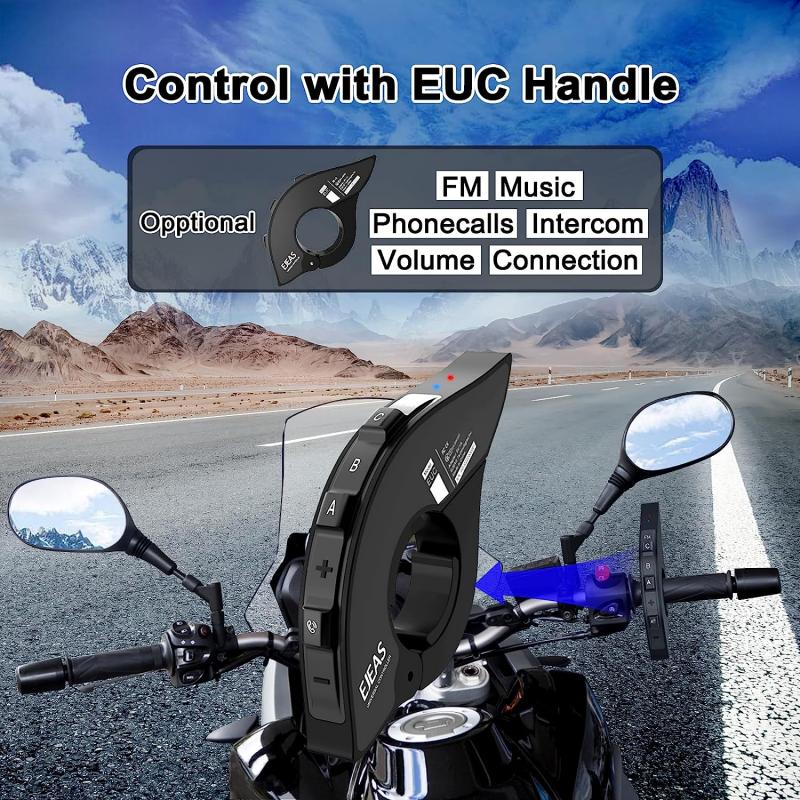
2、 Camera Settings: Adjusting the camera's features for wildlife monitoring.
Camera Settings: Adjusting the camera's features for wildlife monitoring.
Setting up a towguard wildlife camera is a relatively simple process that requires a few key steps to ensure optimal performance. Here's a guide on how to set up your towguard wildlife camera and adjust its settings for effective wildlife monitoring.
1. Choose the right location: Select a spot where wildlife activity is frequent, such as near a watering hole, game trail, or feeding area. Ensure that the camera is securely mounted and positioned at the appropriate height and angle for capturing wildlife.
2. Insert batteries and memory card: Open the camera's battery compartment and insert the required batteries. Make sure to use high-quality batteries for longer battery life. Additionally, insert a compatible memory card to store the captured images or videos.
3. Power on the camera: Turn on the camera by pressing the power button. Most towguard wildlife cameras have a startup screen that displays the camera's settings and options.
4. Adjust camera settings: Use the camera's menu or settings button to access the various options. Adjust the resolution, image quality, and video length settings based on your preferences and the available memory card capacity. Higher resolution and image quality settings will result in clearer images but may consume more storage space.
5. Set the trigger sensitivity: The trigger sensitivity determines how easily the camera detects motion. Adjust this setting based on the size and speed of the wildlife you expect to capture. Higher sensitivity may result in more false triggers from wind or vegetation movement, while lower sensitivity may cause missed wildlife activity.
6. Enable night vision: If you plan to monitor wildlife during nighttime, ensure that the camera's night vision feature is enabled. This will allow the camera to capture clear images or videos in low-light conditions using infrared technology.
7. Test and fine-tune: Before leaving the camera unattended, test it by walking in front of it to ensure that it triggers properly and captures the desired footage. Make any necessary adjustments to the camera's position or settings based on the test results.
Remember to periodically check the camera, replace batteries, and download the captured images or videos for analysis. By following these steps and adjusting the camera's settings accordingly, you can effectively monitor wildlife activity and capture valuable data.
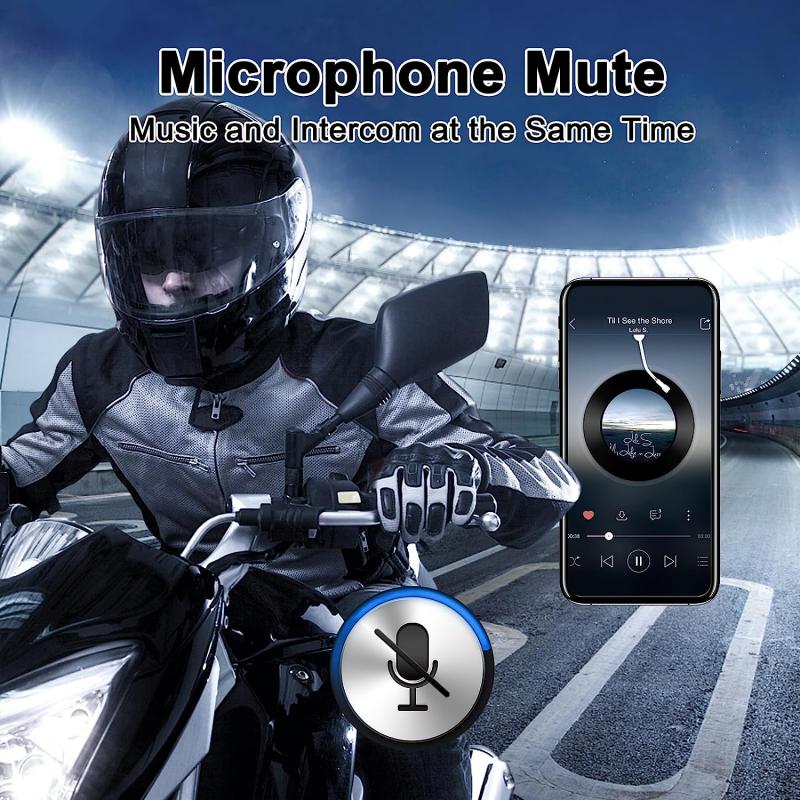
3、 Power Source: Ensuring a reliable and long-lasting power supply.
To set up a towguard wildlife camera, you will need to follow a few steps. However, before diving into the setup process, it is crucial to ensure a reliable and long-lasting power supply for your camera. This will ensure that your camera can capture wildlife activities without any interruptions.
One of the most common ways to power a towguard wildlife camera is by using batteries. It is recommended to use high-quality, long-lasting batteries to ensure a consistent power supply. Lithium batteries are often preferred due to their extended lifespan and ability to withstand extreme temperatures. Additionally, consider using rechargeable batteries to reduce waste and save money in the long run.
Another option for a reliable power source is using a solar panel. Solar panels can be a sustainable and cost-effective solution, especially if you plan to keep the camera running for an extended period. Ensure that the solar panel is positioned in an area with maximum sunlight exposure to generate sufficient power.
Furthermore, some towguard wildlife cameras offer the option of using an external power source, such as a power bank or an AC adapter. This can be particularly useful if you have a nearby power outlet or if you want to minimize battery changes.
Lastly, it is essential to regularly check the battery life or power status of your camera. Some towguard cameras come with a power indicator that allows you to monitor the battery level. This way, you can replace or recharge the batteries in a timely manner, ensuring uninterrupted surveillance.
In conclusion, setting up a towguard wildlife camera requires a reliable and long-lasting power supply. Whether you choose batteries, solar panels, or an external power source, it is crucial to consider the specific needs of your camera and the duration of surveillance. By ensuring a consistent power supply, you can capture wildlife activities without any interruptions and enjoy the full benefits of your towguard wildlife camera.

4、 Memory Management: Maximizing storage capacity and organizing captured footage.
Memory Management: Maximizing storage capacity and organizing captured footage.
Setting up a towguard wildlife camera is a relatively straightforward process. Here's a step-by-step guide to help you get started:
1. Choose the right location: Select an area where wildlife activity is frequent, such as near a watering hole or a known animal trail. Ensure that the camera is mounted securely and at the right height for optimal coverage.
2. Insert memory card: Most towguard wildlife cameras use SD cards for storage. Insert a compatible memory card into the designated slot on the camera. Make sure the card has enough storage capacity to accommodate the amount of footage you expect to capture.
3. Power on the camera: Turn on the camera using the power button or switch. Some models may require additional batteries or an external power source, so ensure you have the necessary equipment.
4. Adjust camera settings: Use the camera's menu or settings button to configure options such as resolution, motion sensitivity, and time-lapse intervals. These settings can help maximize storage capacity by capturing only relevant footage.
5. Test and position the camera: Before leaving the camera unattended, test it to ensure it is capturing footage correctly. Adjust the camera's angle and position to capture the desired area effectively.
Now, let's discuss memory management and organizing captured footage. As wildlife cameras continuously capture footage, it's essential to maximize storage capacity and keep the footage organized for easy retrieval. Here are some tips:
1. Optimize camera settings: Adjust the camera's resolution and frame rate to strike a balance between video quality and storage capacity. Lower settings can help save space while still capturing usable footage.
2. Use motion-activated recording: Set the camera to record only when motion is detected. This feature conserves storage space by eliminating hours of footage with no activity.
3. Regularly check and clear memory: Periodically review the captured footage and delete any unnecessary or redundant files. This practice ensures that the memory card doesn't fill up quickly, allowing for continuous recording.
4. Backup and archive footage: Consider transferring important footage to a computer or external hard drive for backup and long-term storage. This step helps free up space on the memory card while preserving valuable footage.
5. Organize files by date or event: Create folders or use file naming conventions to categorize footage based on date or specific wildlife events. This organization makes it easier to locate and review specific footage when needed.
In conclusion, setting up a towguard wildlife camera involves selecting the right location, inserting a memory card, and adjusting camera settings. To maximize storage capacity and organize captured footage, optimize camera settings, use motion-activated recording, regularly clear memory, backup important footage, and organize files systematically. By following these steps, you can ensure efficient memory management and easily access the footage you need.
